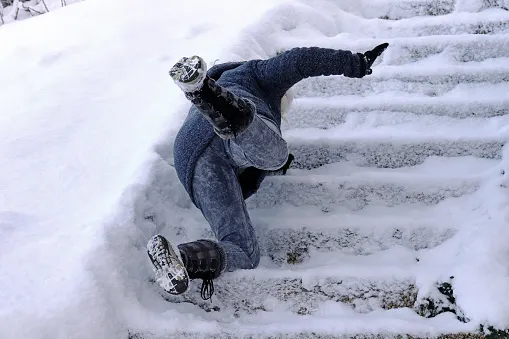
Why is ice so slippery?
We all know it's slippery, but do you actually know why ice is slippery? Allow this science to clarify.
It’s that time of the year when streets start getting icy, and pedestrians or drivers fight to avoid slipping and sliding. But, what really causes those ice surfaces to get so slippery?
To many, it may seem a given, ice is slippery just like water is wet right? But what is the real science behind such an anxiety-inducing scenario for many?
Surprisingly, there is no definite answer to that question.
There is a considerable consensus among scientists that the reason ice becomes slippery as a result of a very thin layer of water resting on the more solid surface below. But the water is not the water we are normally familiar with. It has a sticky and sort of syrupy texture to it. This description may even make it more confusing to understand, and there are actually several theories behind what really happens when we lay our feet or tires on that surface.
IF YOU'RE GOING DOWN, HERE'S THE BEST WAY TO DO IT:
Theory 1: Scientists have argued about the real cause of why icy surfaces are slippery. Among the theories proposed is one stating that when we step on the ice, or when some weight is placed on the ice surface, the pressure exerted causes the top layer of ice to melt. This creates a thin film of water which causes the slippery effect we experience. This theory, however, has been questioned by scientists at the German Max Plank Institute for Polymer Research. They claim pressure would have to be enormous in order to experience this kind of effect.
Theory 2: A perhaps more prominent theory argues that the thin film of water sitting on top of the ice is a result of friction. When our shoes, boots, tires hit the ice, the frictional heat causes the ice to melt, leaving a thin layer of water on top.
SEE ALSO: Why no two snowflakes are alike
This and other theories might explain how the ice ends-up with a thin layer of water on top, but is that water really the cause of it being so slippery?
Theory 3: According to recent research conducted by a group of French scientists, the water sitting on ice is not just plain water, it’s a mix of water and ice crushed into extremely tiny pieces. To understand the real composition of this slippery mix, they used a high sensitivity sound device, capable of capturing sounds at a molecular level.
As others had anticipated, they were able to confirm that the thin film of water found on ice was a result of friction. They were also able to obtain approximate measurements of this layer, which was only about one hundredth the thickness of a strand of hair. So that ultrathin layer of slushy water sitting on ice is responsible for all the ups and downs, turns and twists we see on sidewalks, roads and other surfaces during the cold months of the year.
As the research team suggests, decoding the molecular properties of that slushy water layer may help alleviate it’s slipperiness effects on roads and streets, but also the environmental impact of the tons of salt used on them each year to make the dangerous ice disappear.
--











